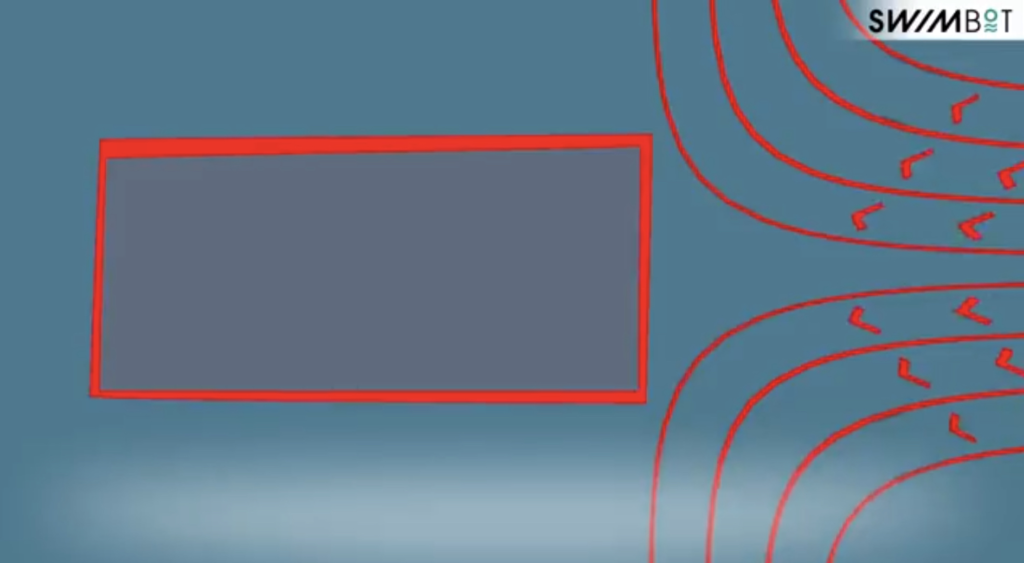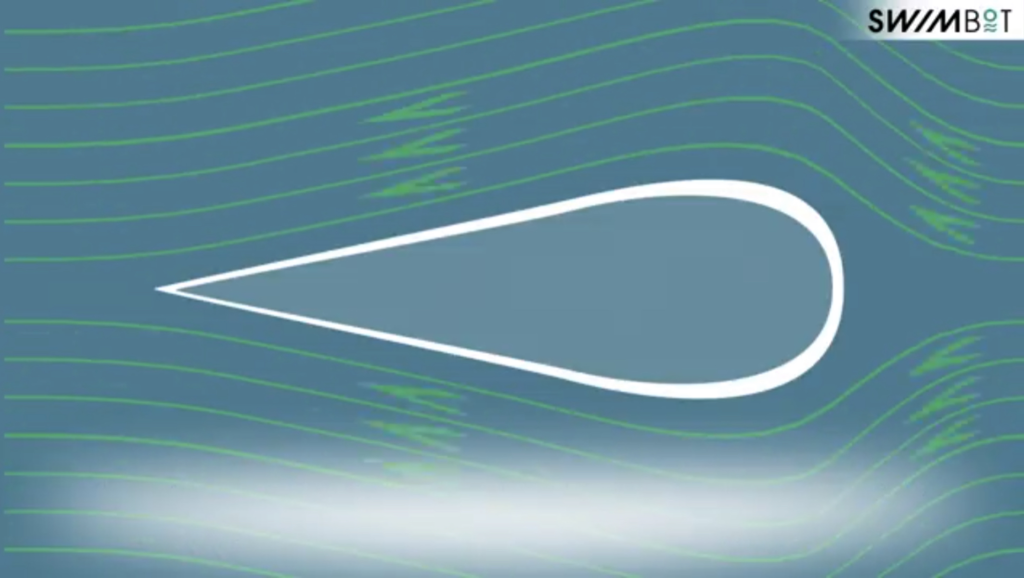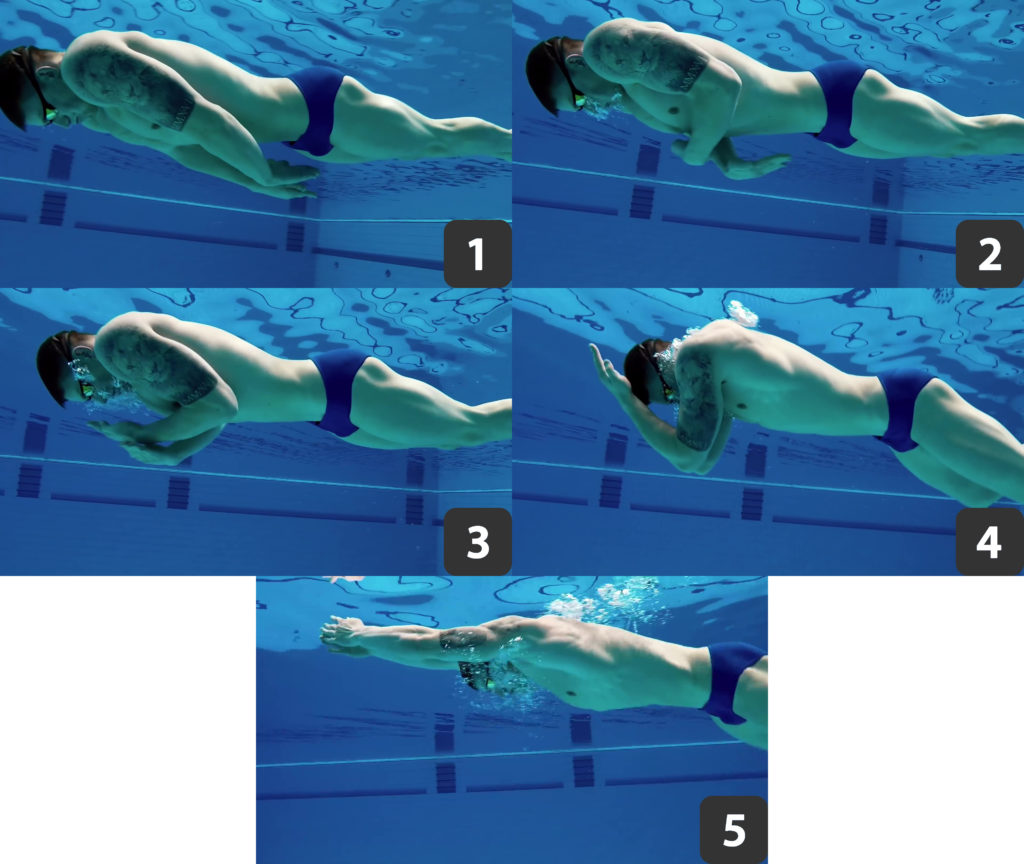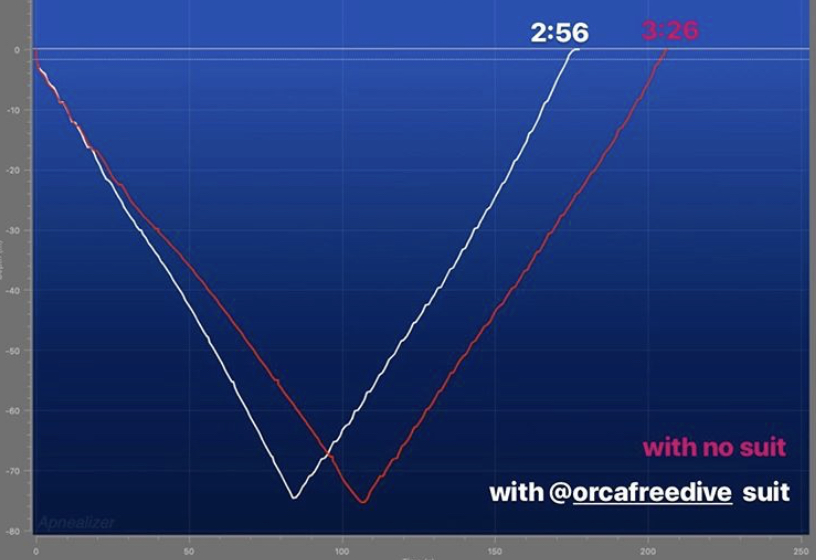Being streamline means having a position in the water that creates as less drag/resistance as possible.
Brent S. Rushall said :
« It is important to consider resistance in terms of swimming performance. If resistance can be minimized, then the propulsive effects of a swimmer’s efforts will be maximized. »[Rushall B. and all 1994] (Part IV – Resistive Force)
There is 3 differents kind of resistance that a swimmer as to face [M. Toussaint and Peter J. Beek, 1992]:
- The pressure drag
- The wave-making resistance
- The frictional drag
The pressure drag
« [The pressure drag] is determined mainly by the body cross-sectionnal area. »[M. Toussaint and Peter J. Beek, 1992]
The pressure drag can also be called form drag, it can be defined in an easier way by saying that the pressure or form drag depend of the form of the frontal surface and the shape of this surface (see illustration 1 and 2).
Both are important.


We can apply those resistances knowledge in freediving in order to improve:
Free Immersion
- By keeping the chin inside and closing the trachea, we are going to have a back more curve and reduce the drag.
- By keeping our feet together we are going to have a more hydrodynamic shape in the water and reduce the drag
- By having narrow arm movement : extension with the arm near the body, and pulling the rope the same way, we insure to reduce the surface that we offer and the drag with it.
Constant Weight with Fin (CW and CWTB) (mono and bi Fin)
- While the divers kick, the distance between his 2 heels should never exceed the distance between your 2 shoulders.
The size of the kick may still vary depend of the swimmer, we do not all have the same zone of efficient (depend of the freediver and of his fin) - If you swim on arrow position lock your shoulder and be careful of not moving them forward/backward
Constant Weight Without Fins (CNF)
- Keep a narrow arm movement, don’t open your arm big, try to picture yourself swimming in a very small tunnel try to use as less space as possible (Illustration 6 of Upper body propulsion from Swimming to Freediving).
- When you kick, always keep your knees inside your heels. Open your knees as less as possible.
- When you bring back your arm keep your elbow inside and cross your arm near your torso, like this you will reduce the possible drag (illustration 3)

Source : https://www.youtube.com/watch?v=1-MnnQd4afo&feature=youtu.be
Freefall stage[1]
- On this part keep your chin inside and close your trachea. The first reason will be to protect the trachea against any possible squeeze but it’s also the best hydrodynamic position.
- Curve your upper back in order to protect your chest and lungs, but also to adopt the best position in order to reduce form drag
- Keep your feet and legs together (don’t open them)
One really important details about the freefall position. It is not only about the best hydrodynamic position, it is also about a relax position. Each freediver will have to find the best compromise in order to reduce his drag while he is keeping his body relax. That is why the arrow position is not always the best for freefall. Even if it’s the best in terme of streamline, it uses more muscles to maintain and it also let the chest and lungs open to easier squeeze.
The wave-making resistance
« The wave-making resistance is the result of the deformation of the water surface. »[M. Toussaint and Peter J. Beek, 1992]
As we face this resistance only at the surface of the water. It is not gonna impact our freediver so we will not extend this development here.
The frictional drag
The frictional drag will depend of the friction between the moving object (the swimmer/freediver) and the water.
You can reduce it by shaving, wearing a cap, wearing a wetsuit etc …
It has been proveed that a wetsuit can improve your performance. See below 2 dives of William Trubridge. You can see an improvement of 15% on the dive only with the suits.

Working on those kind of drag will happens when you reach a certain level and searching for performance.
A leisure diver will not bother too much with frictional drag.
1.1.4Conclusion
The streamline is a very important part of swimming technique. By reducing the swimmer drag, he reduces his resistance and requires way less energy to propel himself in the water.
We have seen through history physical evolution in swimmer.
- First tall and thin to be hydrodynamic (Alexander POPOV, Peter VAN DEN HOOGENBAND, Michael PHELPS, Ian THORPE, Grant HACKETT etc.)
- Then a bigger muscular mass. Encouraged by swimsuit reducing drasticaly the resistance, introducing to us very muscular swimmers profiles. (Frederic BOUSQUET, Paul BIEDERMANN, Milorad CAVIC, Rafael MUNOZ PEREZ etc.)
- Then from 2010 and the banishment of such swimsuits, the morphotype of swimmers started to come bac to thin and tall (Yannick AGNEL, Camille LACOUR, Matt GREVERS, Kristóf MILAK, Michael PHELPS etc.).
Proving us, not even on purpose, that the best swimmer in the world will be the one with the best streamline profiles in the water.
It is now important that every activity implying swimming such as freediving, Finswimming, Lifeguard competition, open water, triathlon … must in a first place adopt the best streamline in order to reduce their drag as much as possible.
A relevant movement by a human in an aquatic environment initially starts by a decrease of his drag, or motion resistance, in order to use as less as energy as possible to create and maintain a swimming speed.
On other articles, we are going to study swimming propulsion. Adding to our understanding which process and techniques are the more efficient to propel the swimmer on the wanted direction.
You can already read some more about the upper body propulsion over here
Notes
- [1] The freefall stage is the part when the diver becomes negatively buoyant and does not need to kick or pull the rope to go down. During this stage the diver will adopt a relax and hydrodynamic position to sink using as less energy as possible.
References
- M. Toussaint and Peter J. Beek, 1992: M. Toussaint and Peter J. Beek, Biomechanics of Competitive Front Crawl Swimming, 1992
- Rushall B. and all 1994: Rushall, B. S., Holt, L. E., Sprigings, E. J., & Cappaert, J. M., FORCES IN SWIMMING — A RE-EVALUATION OF CURRENT STATUS, 1994 (PART IV – RESISTIVE FORCE)